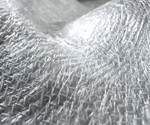Composites UK launches fire performance practical guide
The guide, produced with support from the National Composites Centre, addresses key issues related to fire performance for reinforced composites.

Source | Composites UK
Composites UK (Berkhamsted, U.K.), supported by the National Composites Centre (NCC, Bristol, U.K.), has launched a practical guide on the topic of fire performance for fiber-reinforced polymer composites (FRPs).
With funding from the NCC, the guide was written by Stella Job, Composite UK’s supply chain and environment manager, Tom Royle of Wizz Consultancy and Nigel Keen of Creative Composite Connections.
The fire performance of a composite component or structure is complex, and accordingly, the knowledge base is constantly growing as new products arrive in the marketplace in response to growing demand. This document is meant to address a need to improve the understanding of how the fire performance of FRP components is specified by the engineer and buyer, and achieved by the manufacturer.
The 61-page document covers:
- the key characteristics which define the fire performance of a composites,
- materials and combinations thereof,
- methods of improving properties,
- standards and regulations for sectors,
- testing, and
- future trends.
ity of Bolton and Dr. Sam
Sambasivan, London Underground.
The “Fire Performance of Composites Good Practice Guide” is publicly available to download .
Related Content
-
HTMS joins Mobilise accelerator program to advance its CMC materials
High Temperature Material Systems has developed low-temperature cure prepregs for ceramic matrix composite (CMC) parts offering lightweight and thermal/fire protection up to 1000°C.
-
Expanding high-temperature composites in India and the U.S.
Azista USA offers polymers and processes for carbon/carbon and other CMC, including novel hot-melt phenolic and phthalonitrile prepregs for faster cycle times, alternative solutions.
-
“Structured air” TPS safeguards composite structures
Powered by an 85% air/15% pure polyimide aerogel, Blueshift’s novel material system protects structures during transient thermal events from -200°C to beyond 2400°C for rockets, battery boxes and more.
.jpg;width=70;height=70;mode=crop)





